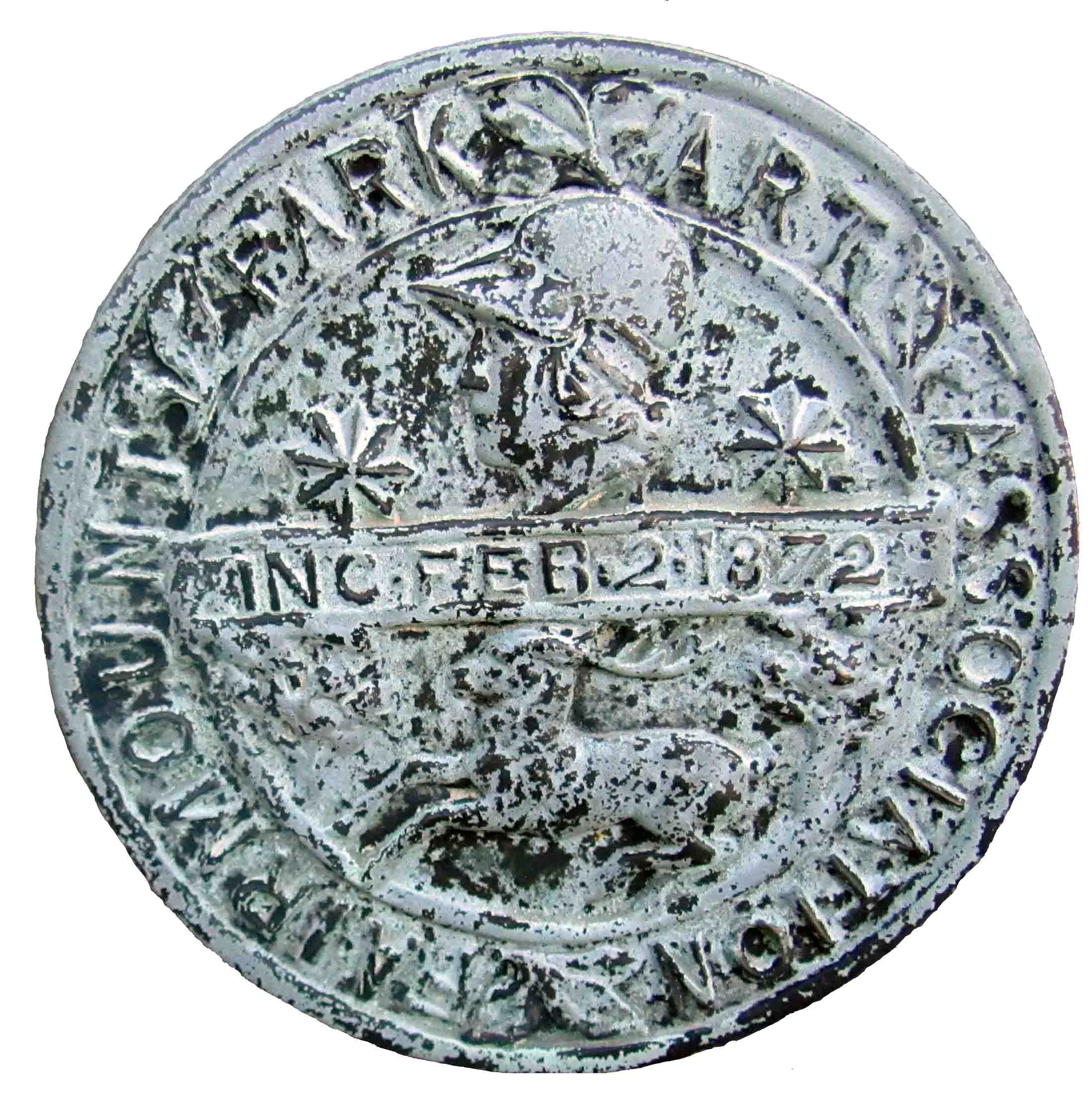The statue was placed in 1957 and sculpted by Walter Hancock (1901-1998). A parade of Revolutionary War veterans statues line the sides of a huge courtyard found to the rear of the west side of the Philadelphia Museum of Art.  There are three to the right and the same amount to the left. If your back is to the Museum, this Pulaski statue is the second one on the right. Simply walk down the the level of stairs and it will be immediately to your right.
There are three to the right and the same amount to the left. If your back is to the Museum, this Pulaski statue is the second one on the right. Simply walk down the the level of stairs and it will be immediately to your right.
All the statues are made of bronze and look similar, both in composition, form, size and subject matter. This statue dimensions are approximately: Sculpture: approx. 84 x 39 x 37 in.; Base: approx. 83 1/2 x 119 1/2 x 112 1/2 in. and is of polished granite base with of course the bronze sculpture on top. There is an incised inscription on front which reads:
1747-1792.
Sailor and diplomat, commander of squadrons.
Against desperate odds, his own ship afire and sinking,
He defeated the British man-of-war Serapis
And established our power upon the seas.
He gave our Navy its first traditions of heroism and victory.
SIRIS describes the statue as a standing portrait of John Paul Jones dressed in his Revolutionary War uniform consisting of a long jacket with fringed epaulets, a vest, a ruffle-necked shirt, knee breeches, and shoes with large buckles. A sword hangs from his proper left side. He wears a three cornered hat and stares straight ahead. In his hands, he holds a telescope up to his chest. The sculpture rests on a square base adorned with rosettes on either side.
John Paul Jones was born is Scotland and when he was just 22, he became a commander of a merchant ship. Later he was forced to leave Scotland to avoid prosecution after he killed a sailor during a mutiny. He came to America and during the Revolutionary War, he attained the rank of captain in the Continental navy. He was well known for his attacks made along the coasts of England and northern Ireland. He most famous occurred in 1779 when he captured the British battleship, Serapis. It is during this battle that Jones is said to have spoken the words, "I have not yet begun to fight," when the British commander asked him to surrender.
This piece was erected through the bequest of General William F. Reilly. The Reilly Trust was initially administered by First People's Bank, but as of the 1993 SOS! survey, Core States Bank was handling the Reilly Trust. This sculpture is one of several which comprises the William M. Reilly Memorial on the west side of the museum. The memorial honors Revolutionary War heroes. The SOS! survey cover sheet notes that current conservation of the piece is the responsibility of the Reilly Trust. C. Louis Borie was the architect of the base.
This area is one of the premier tourist attractions for Philadelphia and referenced several times in their official tourist site. Here is what they have to say:
In 1890 General William M. Reilly of the Pennsylvania National Guard bequeathed funds for a memorial to Revolutionary War heroes. Though it took decades to raise additional money, six sculptures were eventually installed northwest of the Art Museum.
Immortalized in bronze, the Marquis de Lafayette gestures flamboyantly as his cape billows around him. Another European volunteer, Major General Friedrich von Steuben, points steadfastly ahead. General Richard Montgomery, who died in the assault on Quebec, stands pensively with hat in hand. Maritime hero John Paul Jones is shown with his telescope, while General Casimir Pulaski poses fiercely with sword at the ready. Unusual for this group, the sculpture of General Nathanael Greene emphasizes nonmilitary aspects of the man’s character.
Marquis de Lafayette (c. 1947) by Raoul Josset Major
General Friedrich von Steuben (c. 1947) by Warren Wheelock
General Richard Montgomery (c. 1946) by J. Wallace Kelly
John Paul Jones (c. 1957) by Walker Hancock
General Casimir Pulaski (c. 1947) by Sidney Waugh
General Nathanael Greene (c. 1960) by Lewis Iselin Jr.
SOURCE